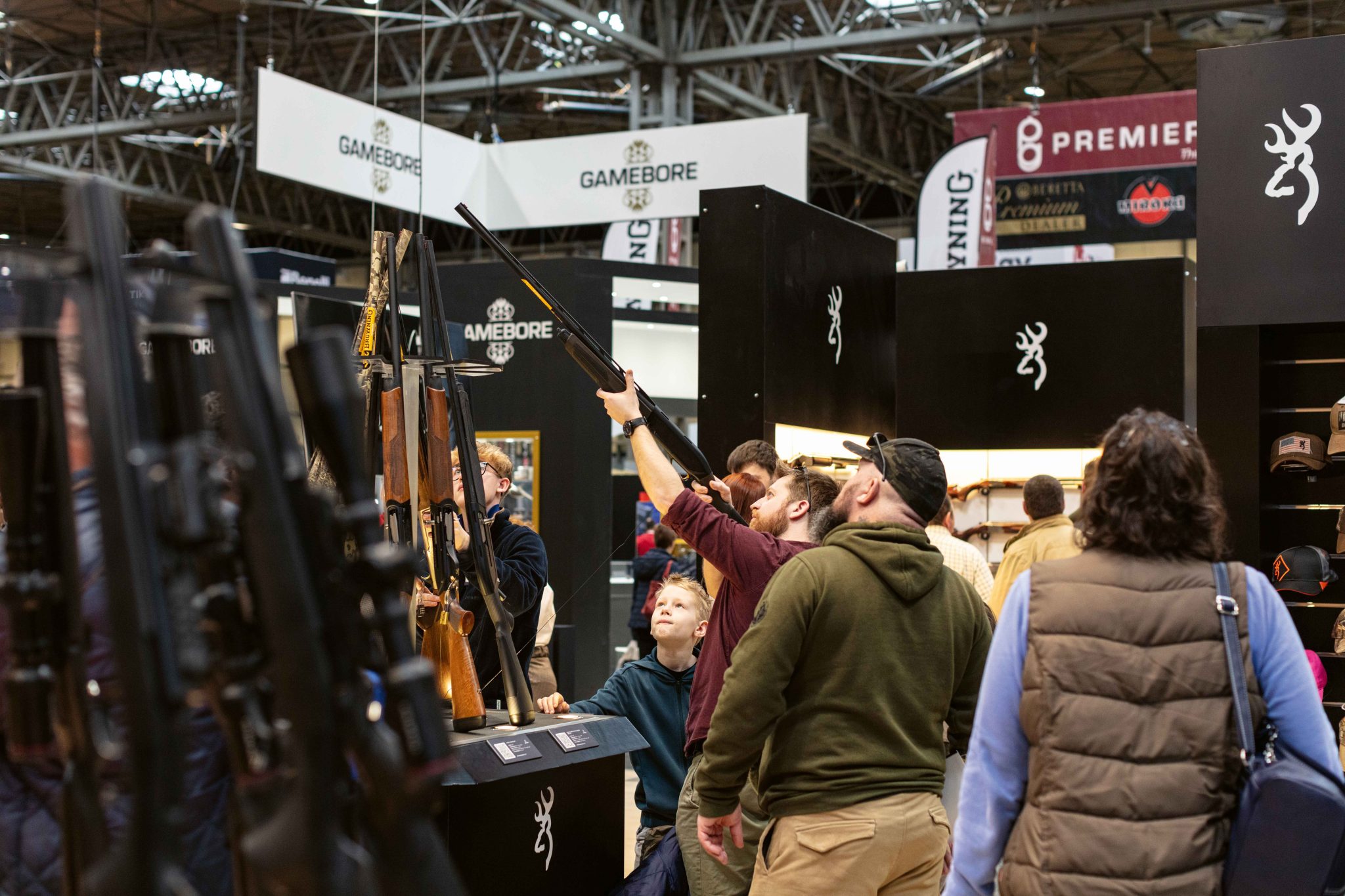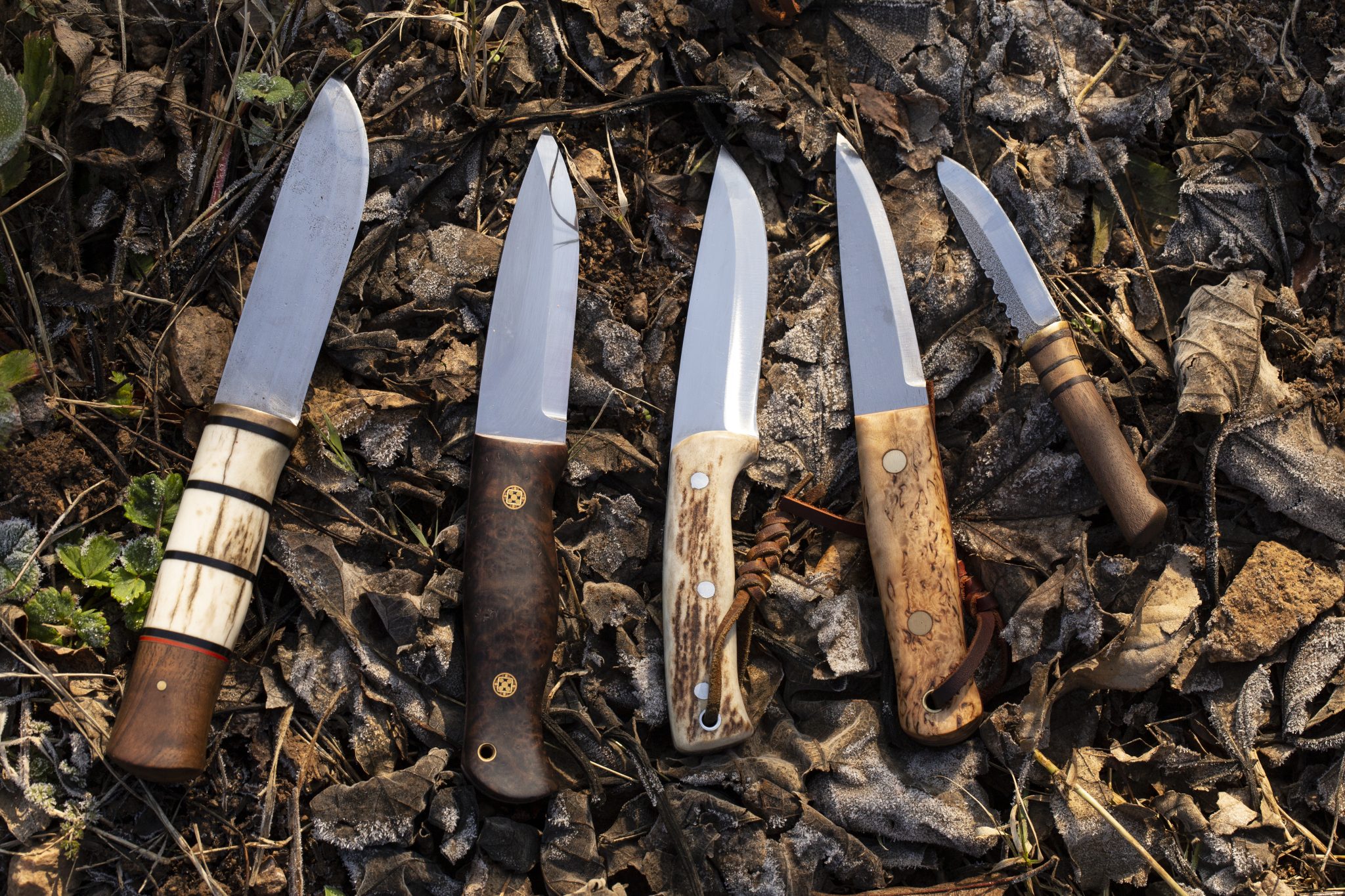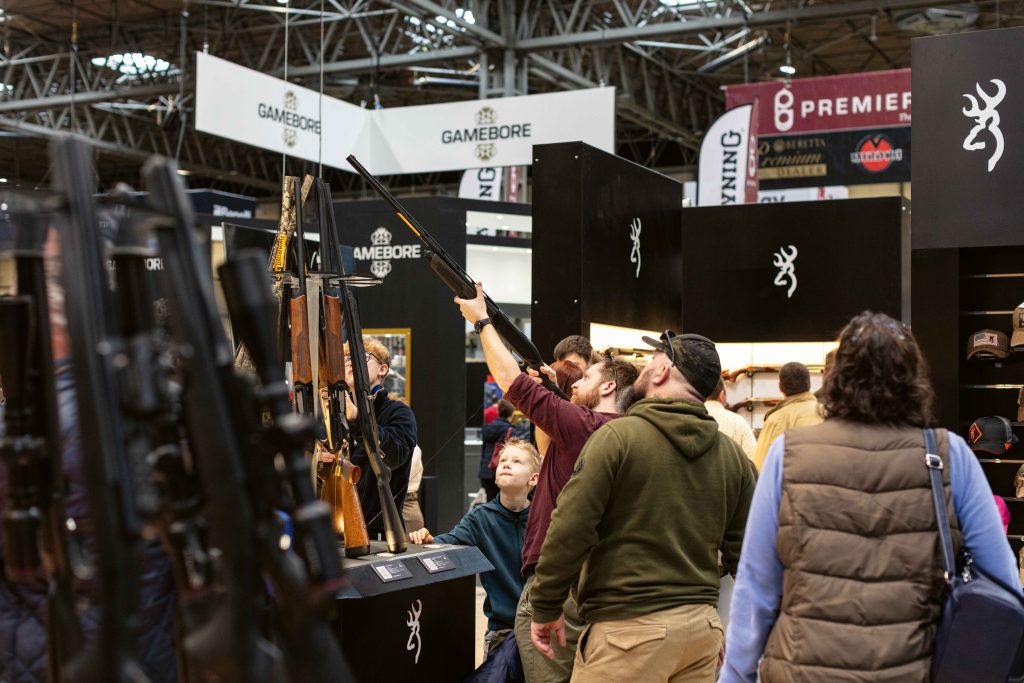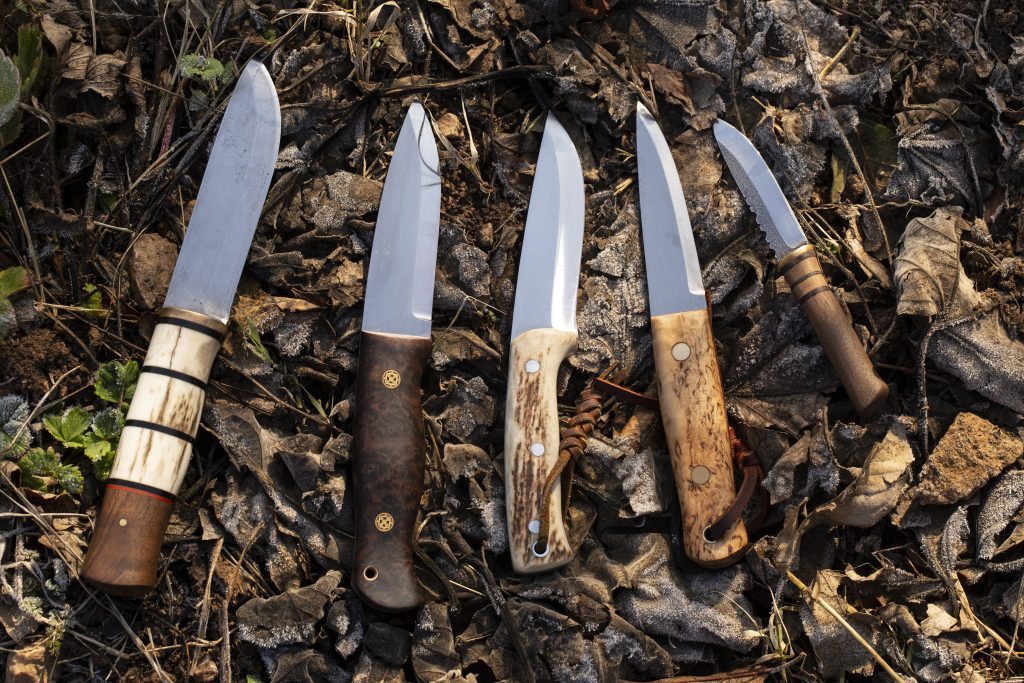Win CENS ProFlex DX5 earplugs worth £1,149 – enter here
Stalking on the Corriemulzie Estate
<strong>Meet the headstalker whose expertise makes for a vintage stalk</strong>
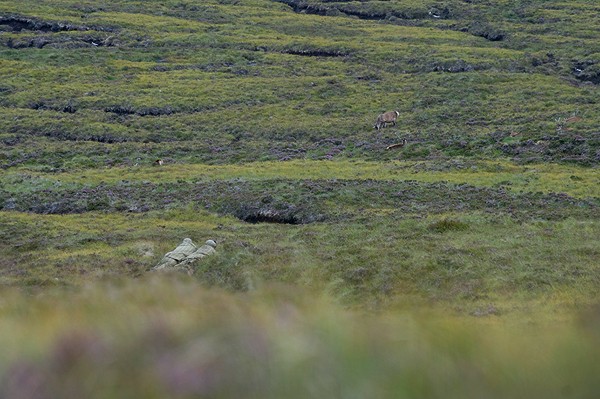
Headstalker Ali Mackenzie tossed a sprig of heather into the air and watched as it flew back over his right shoulder. We were standing on top of Croc Beg, known locally as the crows nest, with views across Corriemulzie, a sporting estate on the Sutherland and Ross-shire border. To our south was the Munro Seana Bhraigh, next to the sharp point of An Sgurr. To our west, in stark contrast, was the sea beyond Ardmore Bay by Ullapool, with a ferry from the Summer Isles visible on the water. The wind had been shifting all morning and now came from the south-west. Its not ideal, grumbled Ali, looking up at the clouds for confirmation, but the estate is 33,000 acres, so we have options.
Though only 34 years old, Ali has 17 years experience on these hills, so he is well versed in the deers movements, even with a challenging wind. He quickly spied a group of mature stags towards the base of An Sgurr. However, further investigation with his Gray telescope proved revealing. Wed never get anywhere near them, he said. Ive stalked into stags there on many occasions. You have to sweep around from above and its a beautiful approach with views of Toll Lochan, one of our six trout lochs, and the steep-sided Corrie Mhor. But with this wind direction and the pockets of hinds between us and the stags wed be rumbled almost immediately. Besides, those are only the hinds that I can see. Its the ones that you cant see that usually cause problems.
So we set off in the other direction, where the wind would help rather than hinder. There are often several stags down by the Glasha burn, which would allow us to use this wind to our advantage, Ali explained. Well need to take the Argocat then come up on to Bull Hill before crossing Stony Ridge beyond. To get there, well have to be extra vigilant through a stretch of peat hags known as the Black Slips, where you could hide a bus, let alone a group of hinds.
Alis ability to explain his thought processes keeps the Rifle in the picture
and improves the experience as a result. The Rifle today was the estate owner, Shane Colvin, whose sons Archie, 21 years old, and Hubert, 19 years old, were taught to shoot and fish by Ali. He is a god in their eyes, said Shane, when Ali was out of earshot. Anything he says out here is taken as gospel truth. Were very fortunate to have him.
When we got to the Black Slips, we did indeed bump into a team of hinds and calves. Ali was quick to ease back and allow them to depart in their own time. Im quite happy to take my time, especially on a warm day with views like this, Shane whispered, leaning back against the heather.
A lone hind on the ridge
With the ground clear again, Ali led us out on to the edge of Stony Ridge, where he left us briefly to glass the slope leading down to the burn. This could be tricky, he said. The good news is that there are some shootable beasts on the south side of the ridge towards the Glasha. They seem settled in for the next hour at least. The bad news is that there are plenty of deer on the north side of the ridge, including a lone hind, which could alert the whole hill to our position.
Well have to take a calculated risk to get close enough to take a shot, as we cannot avoid being skylined. If we walk slowly, as close together as possible to reduce our silhouette, and with a bit of crawling, we might reach the other end of the ridge unnoticed. That would allow us to move down the slope and into the wind for those beasts nearer the burn. Theres a good chance that well shift the other deer, but with luck theyll move in such a direction that our stags wont see them. Im still worried about that lone hind, though.
As we moved forward, the clouds shifted, causing a shaft of sunshine to bathe us in light for a brief moment. Ali stopped, waiting for the cloud to cast its shadow before moving forward. All the while he kept his eyes trained on the deer to our north, occasionally dropping on to his knees to crawl forward on his belly. After half-an-hour of inching across the open ground, we reached the cover of a peat hag on the far side.
I think we got away with it, said Ali. I didnt see any of the deer move. That lone hind is still there, so were not home and dry yet, but its amazing what you can get away with if you wear light tweed in these pale-green Sutherland hills. Id be surprised if we havent at least aroused suspicion, though. Lets give it a while for everything to settle back down again. Now would be a good time to eat your piece.
Shane ate his roll as the sense of anticipation heightened. Slightly squashed from the crawl, his bap was filled with fresh salmon caught by one of his sons friends only days earlier. Nearly all of the fish we catch are returned, but it was his first salmon, so we decided to eat it in celebration, he explained. The estate has the fishing on the Mulzie and the Rapach rivers, which join to form the Einig, a tributary of the Oykel. Were lucky that we have the same clients returning year after year, including four generations of the same family, he added. Shane also owns the nearby Oykel Bridge Hotel, which attracts anglers from across the globe.
A group of 50 deer were on the move further down the Glasha burn, which acts as the boundary between Corriemulzie and neighbouring Alladale. Its owner, Paul Lister, has proposed establishing a wildlife sanctuary for wolves and lynx. If his plans were ever to take shape, a high-tensile wire fence would run along the other side of the burn, barring the regular passage of deer across the waterway.
Sadly, we have no communication with Alladale, said Shane. We enjoy close working relations with the other estates that we march with, but since Alladale stopped coming to the deer meetings, we dont know how many deer are culled on the estate. But we have noticed a reduction in overall deer numbers in recent years, especially the hinds, and we have dropped our own annual cull of hinds as a result.
Refreshed, we crawled forward once more towards a gutter that would allow us to approach to within 200 yards of the stags unnoticed. Ali scrutinised each beast in turn with his telescope before making his selection. Our primary objective is to remove any poor heads, such as switches or six-pointers, or any older beasts that are going back. Theres a six-pointer, but he looks like a youngster, no more than six years old, so Ill leave him to develop. He seems to be looking this way, but his eyes are half shut, so hopefully he wont spot us.
Hes with three 10-pointers, two of which are young crackers. Theyre in excellent condition, so I want to keep them on the hill, as theyll probably be proper monarchs of the glen next year. The third looks an older beast, past his best maybe 13 or 14 years old. The tines on his antlers are flat like fingers rather than curved in a bowl shape, which is a sure sign that he is going back.
The waiting game
Focussing my binoculars from the gutter, I had a ringside seat as Ali and Shane crept forward to no more than 150 yards from the group of stags, where a shot could be taken. As they approached, one of the young 10-pointers rose to its feet and began grazing on a patch of grass. Stalker and Rifle lay still until its head was down before slithering forward over the soggy black peat. As they reached the firing point, the older stag also roused itself, shaking its coat free of dust.
I waited, transfixed, as Ali set the Sako 85 .270 rifle on to its bipod and ushered Shane in behind the 8×50 Swarovski Habicht telescopic sight. Shifting my gaze from Rifle to stag, I listened for the bullet report and impact, but none came. The beast seemed agitated, perhaps bothered by the flies. It shuffled about, either standing at an angle or positioning itself too close to one of the other stags for a safe shot.
Eventually, it stood square on in the open and the muffled crack of a 110-grain bullet passing through the moderator broke the silence. The stag walked forward 10 paces, seemingly unfazed, before lifting his foreleg up once, as though flicking a fly away. Then it fell over, dead. Ali and Shane remained still for the next five minutes, as the other stags calmly trotted off, none the wiser.
Its always pleasing to see that your reconnaissance has proved to be correct, Ali said, as the pair examined the fallen beast. He was definitely going back. His back teeth are worn down and this notch on his antler would have been another point in previous years. Hes big and healthy though, maybe 15 stone, so hell go down well with Highland Game, which deals with our venison. A good clean shot, too.
Shane was quick to deflect any praise as Ali radioed for gillie Sandy Skinner to bring the Argocat. This had very little to do with me, he said. Ali did the hard work. It was a tricky stalk, expertly executed, and I loved every second of it.
For more information on stalking and fishing at Corriemulzie, visit www.oykelbridge.com.
Related Articles
Get the latest news delivered direct to your door
Subscribe to Shooting Times & Country
Discover the ultimate companion for field sports enthusiasts with Shooting Times & Country Magazine, the UK’s leading weekly publication that has been at the forefront of shooting culture since 1882. Subscribers gain access to expert tips, comprehensive gear reviews, seasonal advice and a vibrant community of like-minded shooters.
Save on shop price when you subscribe with weekly issues featuring in-depth articles on gundog training, exclusive member offers and access to the digital back issue library. A Shooting Times & Country subscription is more than a magazine, don’t just read about the countryside; immerse yourself in its most authoritative and engaging publication.



